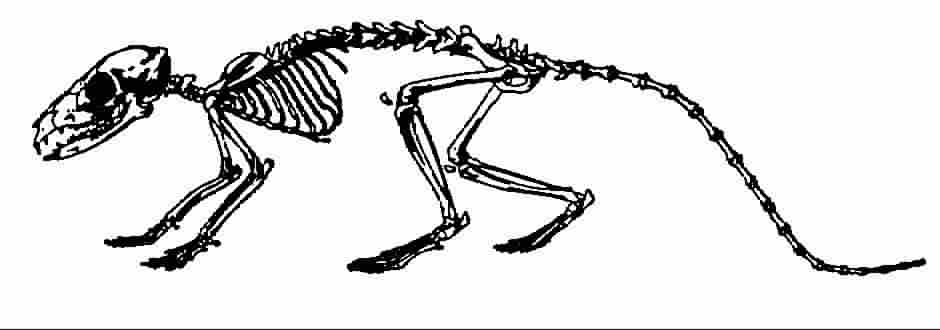
Evolution. 1. Any of several parts of the human brain to emerge during the mammalian adaptation a. to nocturnal (i.e., night) life, and b. to competition with reptilian foes. 2. Specifically, those forebrain areas at the heart of the limbic system which generate emotions for parental care, playfulness, and vocal calling (MacLean 1990).
Usage I: By ca. 150 m.y.a., our mammalian forbears had entrusted their evolutionary future to a new and powerful form of arousal: emotion. In significant measure, the nerve network for emotions, feelings, and moods evolved from neural structures earlier committed to smell.
Usage II: That emotions are like aromas--pleasant or unpleasant--is because they were designed from an olfactory model. Nonverbally, this shows, e.g., in the curled-upper-lip display, which reveals a. nausea, should we smell a fowl odor, and b. disgust, as we listen to a colleague's "rotten" idea. When something looks, sounds, or smells "fishy," the muscles of our face telegraph the reaction for all to see.
Usage III: The fourth great epoch of nonverbal communication took place during the evolution of the mammalian brain. In earlier brains, body movements appeared as reflexes. Neither learning nor memory was required, e.g., to crouch from a looming object, startle to a sound, or withdraw from a painful bite.
Embryology. The mammalian brain is visible by the end of the 5th
week of life, as nerve cells project fibers from early nasal tissue to the front
end of the rapidly growing cerebral hemispheres (i.e., the
telencephalon). By week 6, olfactory bulbs begin to form,
which eventually connect to an interpretive center for smell in the neocortex
(in the neopallium or "new cloak") of the temporal lobe. The olfactory
"smell brain" (i.e., the paleopallium or "old cloak") has important
links to the limbic system.
RESEARCH REPORTS:
In proportion to brain size, humans have the largest limbic system of any
vertebrate (Armstrong 1986), making them the most emotional animals yet to walk the earth.
1. The earliest mammals ". . . were 'reptiles' that were active
at night" (Jerison 1976:11). 2. "The evolution of hearing and
smell to supplement vision as a distance sense is sufficient reason for the
evolution of an enlarged brain in the earliest mammals" (Jerison 1976:11-12).
3. "Progressive evolution of encephalization within the mammals
came late in their history, in the last 50 million years of a time span of about
200 million years" (Jerison 1976:7).
Consciousness. Consciousness first appeared in
vertebrates ca. 200 m.y.a., in mammals, according to neurophysiologist John
Eccles of the Max Planck Institute for Brain Research in Frankfurt (Bower
1992:234). To seek primordial self-awareness, we go to great lengths to quiet
the verbal dialogue, e.g., through meditation, chanting, or staring into
candle flames, in order to re-enter the original consciousness which lies beneath
the chatty stream in a region of the brain stem known as the thalamus. We
experience a deeper-level, mammalian form of consciousness in the evolutionary
older thalamus, which is the central processing station for all the senses
except smell on their routes to the cerebral cortex. It is within the thalamus
that a human's central nervous system first experiences consciousness of
incoming sensations, before they are re-examined upstream in the neocortex.
Neuro-notes I. 1. "The paleomammalian brain is
represented by the limbic system . . ." (MacLean 1975:75). 2.
"The neomammalian brain is represented by the rapidly evolving neocortex and
structures of the brainstem with which it is primarily connected" (MacLean
1975:75).
Neuro-notes II. "In primitive brains, subcortical and
extrathalamic sensory structures were crucial to sensory processing. Comparable
structures continue to be important in the advanced brains of modern mammals
[such as, e.g., the hindbrain's reticular formation and the midbrain's superior
and inferior colliculi], even though the role of the cerebral cortex and
thalamus in sensory processing has expanded enormously" (Willis 1998C:109).
Studies in cats, e.g., show the superior colliculi to be especially important
for perceiving objects in space; the acuity of "collicular vision" in humans is
unknown (Willis 1998D; but see NONVERBAL
CONSCIOUSNESS, Blindsight).
See also PRIMATE BRAIN, REPTILIAN BRAIN.
YouTube Video: Watch a one minute lecture about the mammalian brain.Copyright 1998 - 2016 (David B. Givens/Center for Nonverbal Studies)
Illustration detail from Getting There (copyright 1993 by William
Howells)